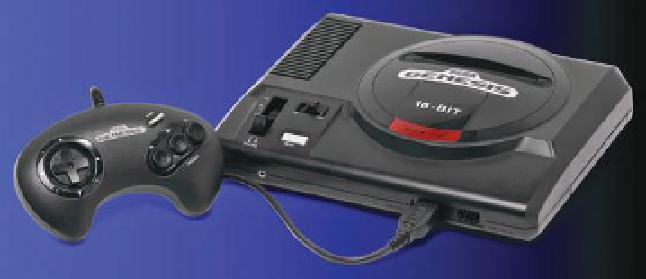Game Development Reference
In-Depth Information
Super Famicom
In 1991, Nintendo released the 16-bit Super Famicom in America and
called the $249.95 console the Super NES (SNES). The system used a
dedicated 8-bit Sony SPC700 sound chip with eight separate channels
and a total sound capacity of 64KHz. You could also stream audio from
the cartridge into the game, but this was hindered by the transfer rate
as it streamed. All in all, this was a huge leap forward, as you could now
provide music and voice-over and SFX tracks that were premixed and
ready to be dropped into the game.
Koji Kondo is among the best known and
loved video game composers of all time.
Credit:
Kei Noguchi.
Koji Kondo was Nintendo's i rst
in-house composer. He composed the
music for tons of popular titles but
his most famous were probably
Mario
Bros
in 1985 and
The Legend of Zelda
in 1986.
Super Mario Bros
was the
i rst video game to feature constant
background music. It established many
conventions for game music, which
survive to the present day. Speaking
in an interview for Wired Magazine
in March 2007, Koji states “I was
just interested in the whole process
. . . I wanted to create something
that had never been heard before,
where you'd think 'this isn't like game
music at all.' ” Koji continues, “First
of , it had to i t the game the best,
enhance the gameplay and make it
more enjoyable. Not just sit there and
be something that plays while you
play the game, but is actually a part
of the game.” (Source: www.wired.
com/gamelife/2007/03/vgl_koji_
kondo_/).
There's just one catch—8-bit samples sound really bad and making them
sound good enough and balanced took some time, not to mention
expertise.
Why 8-bit audio you ask? Good question—the answer is simple—i le
size. All the media in the game—programming, cutscenes, graphics,
audio, etc.—have to i t within a limited space or 'budget' as it's called,
based on the memory capacity of the console and the storage size on the
physical medium, in this case a cartridge. Audio is often considered to
be less important than great graphics or cool cutscene movies and as a
result, the audio space can be quite limited.
Now with the Super NES total RAM size could be 128KB and the cartridge
could hold as much as 6 Megabytes of information—yep, you heard
right—6MB for the entire game!
This same story still plays out today—you still hear downsampled audio
even in today's high-end console games, and for the same reasons. We'll
go through the math a bit later but, for now sui ce to say that the
lower the sample rate and bit rate, the smaller the i le.
The emergence of the Sega Genesis ignited a well-known console war between them and
Nintendo for dominance of the market.
Credit:
Evan Amos.






































